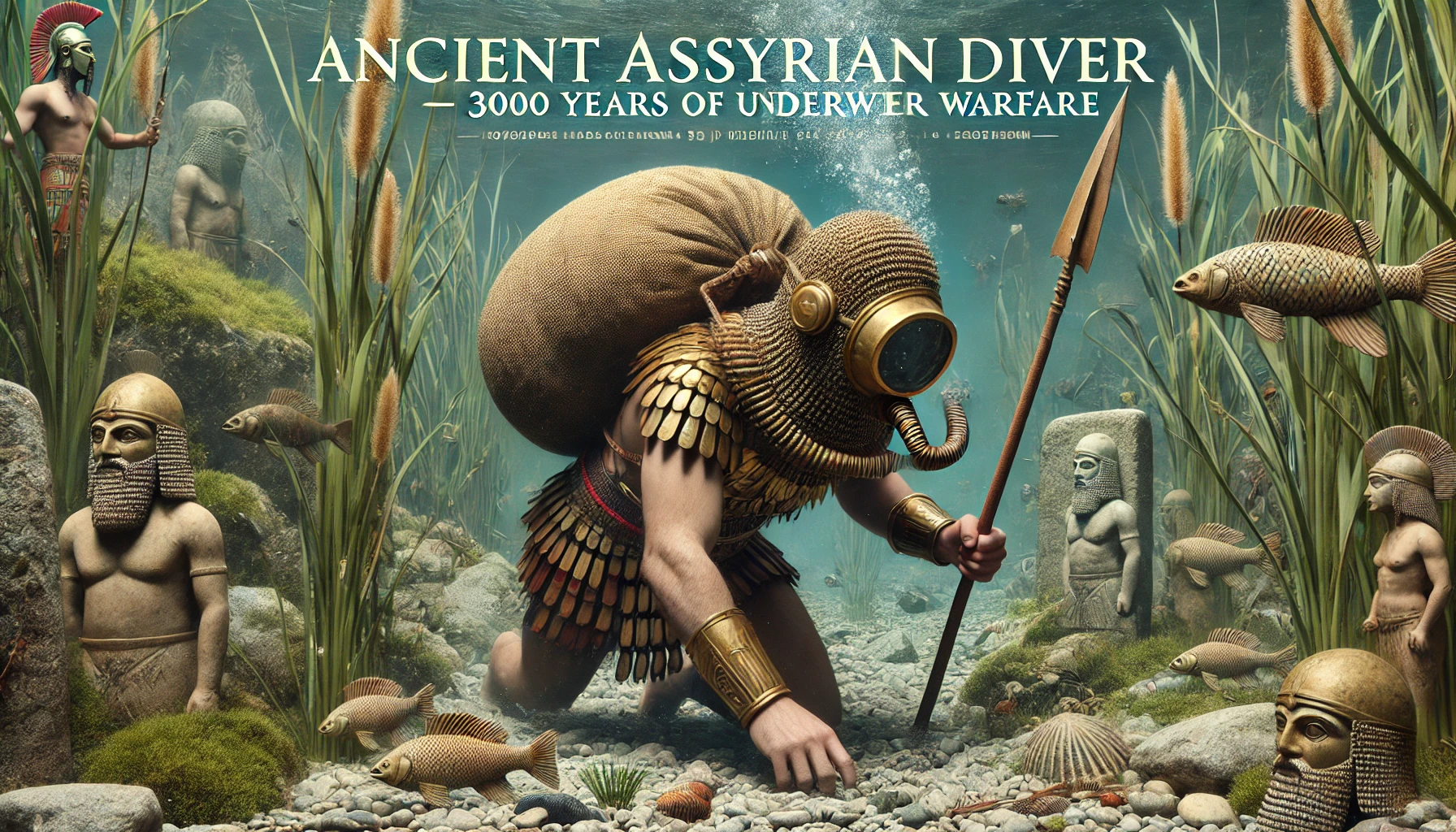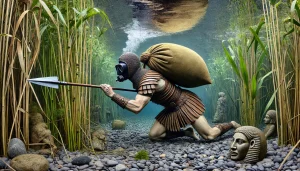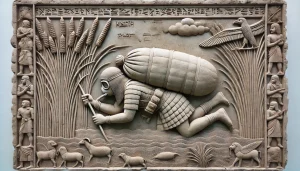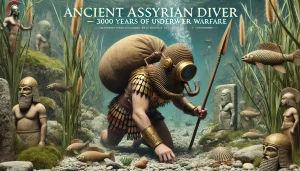Ancient Assyrian Diver: The Oldest Known Evidence of Military Diving

Ancient Assyrian Diver: The Oldest Known Evidence of Military Diving
This remarkable stone carving, currently preserved in the British Museum, provides one of the earliest known depictions of military diving in human history. The artifact originates from the Neo-Assyrian Empire, a powerful ancient civilization that thrived in Mesopotamia — the land between the Tigris and Euphrates Rivers, often referred to as the “Cradle of Civilization.”
The relief shows an Assyrian soldier engaged in a covert aquatic operation, possibly during a military campaign. He is depicted using a rudimentary breathing apparatus, believed to be made from an inflated goatskin or animal bladder, which would have functioned as an early underwater breathing device. The diver likely used it to cross rivers undetected or to sabotage enemy positions from below the surface — a tactic that reveals a surprising level of strategic innovation for the time.
Dating back over 3,000 years, this artifact not only showcases the military ingenuity of the Assyrians but also offers rare insight into early underwater technology. The use of such a device demonstrates that ancient engineers and soldiers were already experimenting with ways to extend human capabilities beneath the water — long before modern scuba equipment was developed.
This ancient depiction stands as a testament to the Assyrians’ advanced military tactics, technological creativity, and their understanding of both engineering and human physiology in challenging environments. The carving continues to intrigue historians, archaeologists, and military scholars alike, representing a key milestone in the long history of underwater exploration and warfare.


